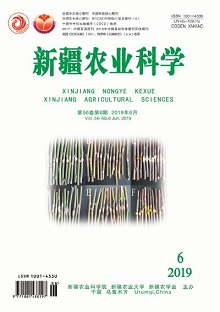|
|
Effects of 2 000 m Test Competition of Young Yili Horses on the Heart Rate Variability
HUANG Jing-jing, MENG Jun, WANG Jiang-wen, ZENG Ya-qi, KONG Qi-sen, CHU Hong-zhong, YAO Xin-kui1, GE Shi-meng, ZHANG Kai-li, REN Xiang
2019, 56(6):
1151-1158.
DOI: 10.6048/j.issn.1001-4330.2019.06.019
【Objective】 The experiment aims to study the effect of 2,000 m test competition on the heart rate variability of young Yili horses in the hope of providing theoretical reference for evaluating the fatigue state and exercise state of Yili horses.【Method】Twenty Yili horses aged 2 years old were selected to organize the test race. According to the measured sports results, they were divided into the excellent group (10 horses) and the ordinary group (10 horses). Time domain index, frequency domain index and nonlinear index of heart rate variability (HRV) were collected before, immediately after race, 30 min after race and 1 hour after race, and the otherness of HRV indexes between different time points and two groups of horses was analyzed.【Result】After the Yili horse 2,000 m test race, HRV time domain index in all normal R-R interphase (mean RR), The standard deviation of RR intervals (SDNN), successive intervals differing more than 50 ms (PNN50), root mean square of successive differences (RMSSD) of the excellent group were significantly lower than those before the race (P< 0.01), the average heart rate (mean HR) after the race was significantly higher than that before the race (P<0.01). Among the frequency domain indexes, very low frequency (VLF), low frequency (LF) and high frequency (HF) were significantly lower immediately after the race than before the race (P<0.01). The ratio of low frequency to high frequency (LF/HF) was significantly higher immediately after the race than before the race (P<0.05). The standard deviation (Y) (SD1) and the standard deviation (X) (SD2) of all normal R-R spacing in the nonlinear indexes were significantly lower immediately after the race than before the race (P<0.01). Mean RR, SDNN, PNN50 and RMSSD in the HRV time domain in the ordinary group were significantly lower immediately after the race than before (P<0.01), and Mean HR were significantly higher immediately after the race than before (P<0.01). Frequency indexes VLF, LF and HF were significantly lower immediately after the game than before (P<0.01). Among the nonlinear indexes, the SD2 immediately after the race was significantly lower than that before the race (P<0.01). The Mean RR, SDNN and RMSSD of the excellent group were significantly higher than those of the ordinary group (P<0.05), and the VLF and LF of the excellent group were significantly lower than those of the ordinary group (P<0.05).【Conclusion】After the exercise of Yili horse at 2,000 m, the sympathetic nerve tension increases, the vagus nerve tension decreases, and the balance between the sympathetic nerve and the vagus nerve is disturbed. So HRV can be used as an effective index to evaluate the exercise fatigue of Yili horses. Mean RR, RMSSD, SDNN and PNN50 indexes could be monitored before the race to evaluate the movement status of horses.
|

